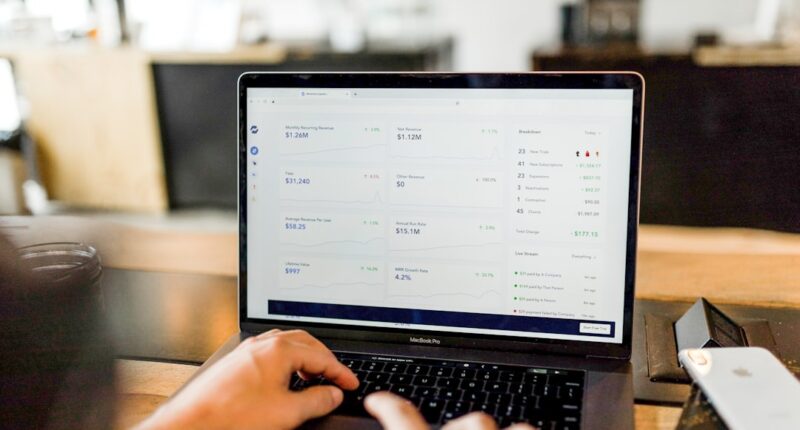Linktree has emerged as a pivotal tool for individuals and businesses seeking to streamline their online presence. In an era where social media platforms often limit the number of links users can share, Linktree provides a solution by allowing users to create a single landing page that houses multiple links. This functionality is particularly beneficial for influencers, content creators, and brands that wish to direct their audience to various resources, such as websites, social media profiles, and promotional content.
By consolidating links into one accessible location, Linktree enhances user experience and engagement. The platform is user-friendly, enabling users to customize their Linktree pages with various themes, colors, and fonts to align with their branding. Additionally, Linktree offers features such as the ability to add images, videos, and even music links, making it a versatile tool for diverse content types.
Users can also integrate their Linktree with other platforms like Instagram, TikTok, and Twitter, ensuring that their audience can easily navigate to their desired content. This seamless integration is crucial for maximizing reach and engagement across different social media channels.
Key Takeaways
- Linktree is a popular tool for optimizing and tracking links on social media profiles
- Linktree’s analytics provide valuable insights into link performance and audience behavior
- Linktree does not show specific user information, but it does provide aggregate data on link clicks
- Tracking features on Linktree include click tracking, traffic sources, and device breakdown
- Users can use Linktree’s tracking features to optimize their links and improve engagement
Understanding Linktree’s Analytics
Unlocking Audience Insights
This data is invaluable for tailoring content strategies and optimizing link placements. For instance, if a particular link receives significantly more clicks than others, it may indicate that the content is resonating well with the audience, prompting users to create similar content in the future.
Real-Time Data for Quick Adjustments
Moreover, Linktree’s analytics dashboard is designed to be intuitive and easy to navigate. Users can view real-time data, allowing them to monitor link performance as it happens. This immediacy enables quick adjustments to be made in response to audience engagement trends.
Data-Driven Decision Making
For example, if a user notices a spike in clicks on a specific link after a promotional campaign, they can capitalize on this momentum by creating additional related content or promotions. The ability to analyze data in real-time empowers users to make informed decisions that can enhance their overall digital strategy.
Does Linktree Show Who Clicks on Your Links?

A common question among Linktree users is whether the platform provides information about who specifically clicks on their links. While Linktree offers robust analytics regarding the number of clicks and general engagement metrics, it does not disclose personal information about individual users who interact with the links. This approach aligns with privacy standards and regulations that protect user data.
Instead of identifying individual users, Linktree aggregates data to provide insights into overall trends and behaviors. This anonymity can be seen as both a limitation and an advantage. On one hand, users may desire more granular data to tailor their marketing efforts more precisely; on the other hand, the protection of user privacy fosters trust and encourages more people to engage without fear of being tracked personally.
As a result, while Linktree does not reveal who clicks on links, it still equips users with valuable information about the effectiveness of their content and the interests of their audience.
Tracking Features Available on Linktree
Linktree offers several tracking features that enhance its utility for users looking to optimize their online presence. One of the primary features is the ability to track link clicks over time. This metric allows users to see which links are performing well and which may need re-evaluation or promotion.
Additionally, Linktree provides insights into the geographic locations of users clicking on links, which can be particularly useful for businesses targeting specific markets or demographics. Another notable feature is the ability to track referral sources. This means users can see where their traffic is coming from—whether it’s from social media platforms like Instagram or TikTok, or from direct traffic.
Understanding these referral sources helps users allocate their marketing efforts more effectively. For instance, if a significant portion of traffic comes from Instagram, a user might decide to focus more on creating engaging content for that platform to drive even more traffic to their Linktree.
How to Use Linktree’s Tracking Features
To make the most of Linktree’s tracking features, users should start by familiarizing themselves with the analytics dashboard. Upon logging into their Linktree account, users can access detailed reports that outline link performance metrics. It’s advisable for users to regularly check these analytics to identify trends over time.
For example, if a user notices that certain links consistently receive high engagement during specific times or days of the week, they can schedule posts or promotions accordingly. Additionally, users should experiment with different types of content linked through their Linktree. By varying the types of links—such as blog posts, product pages, or social media profiles—users can gauge which types resonate most with their audience.
After implementing changes based on analytics insights, it’s crucial to monitor the results closely. This iterative process allows users to refine their strategies continuously and adapt to changing audience preferences.
Interpreting the Data from Linktree’s Analytics

Interpreting data from Linktree’s analytics requires a keen understanding of what each metric signifies. Clicks are often the most straightforward metric; however, understanding the context behind those clicks is essential for meaningful analysis. For instance, if a link receives a high number of clicks but low engagement afterward (such as minimal time spent on the linked page), it may indicate that while the link attracted attention, the content did not meet user expectations.
Moreover, analyzing trends over time can reveal patterns that inform future strategies. For example, if certain links see increased clicks during specific campaigns or promotions, this could suggest that similar future campaigns might yield positive results. Users should also consider external factors that might influence link performance—such as seasonal trends or current events—that could affect audience behavior.
Using Linktree’s Tracking Features to Optimize Your Links
To effectively optimize links using Linktree’s tracking features, users should adopt a proactive approach based on data-driven insights. One strategy involves A/B testing different link placements or formats within the Linktree page itself. By creating variations of the same page—such as changing the order of links or altering call-to-action phrases—users can determine which configurations yield higher click-through rates.
Additionally, leveraging seasonal trends or current events can enhance link performance significantly. For instance, if a user notices an uptick in clicks related to holiday promotions or trending topics within their analytics data, they should consider creating timely content that aligns with those interests. This responsiveness not only boosts engagement but also positions the user as relevant and in tune with their audience’s needs.
Conclusion and Final Thoughts on Linktree’s Tracking Features
Linktree’s tracking features provide an essential toolkit for anyone looking to enhance their online presence through effective link management. While it does not reveal individual user identities, the aggregated data offers valuable insights into audience behavior and preferences. By understanding how to interpret this data and applying it strategically, users can optimize their content and improve engagement rates significantly.
Ultimately, the power of Linktree lies in its ability to consolidate multiple links into one accessible platform while providing actionable analytics that inform decision-making processes. As digital landscapes continue to evolve, tools like Linktree will remain vital for individuals and brands aiming to connect meaningfully with their audiences in an increasingly competitive online environment.
If you are interested in learning more about how to optimize your social media presence, you may want to check out the article “Hello World: A Beginner’s Guide to Social Media Marketing” on Seemless Blog. This article offers valuable tips and strategies for beginners looking to make the most out of their social media platforms. You can read the article here.
FAQs
What is Linktree?
Linktree is a tool that allows users to create a landing page with multiple links to various websites or social media profiles. It is commonly used on platforms like Instagram where users are limited to only one clickable link in their bio.
Does Linktree show who clicks on the links?
Linktree does not have a built-in feature that shows who clicks on the links. It provides basic analytics such as the number of clicks and the location of the clicks, but it does not reveal the identity of the individual users who clicked on the links.
Are there tracking features available on Linktree?
Linktree offers a Pro version with advanced analytics and tracking features. With the Pro version, users can access detailed insights such as click-through rates, traffic sources, and device breakdowns. This can be useful for businesses and influencers looking to track the performance of their links and optimize their marketing strategies.





